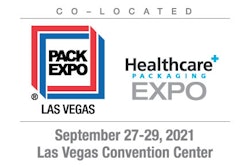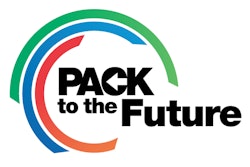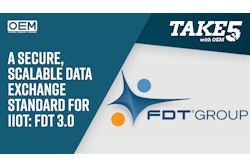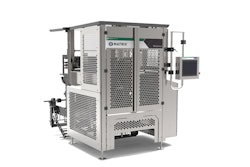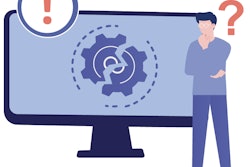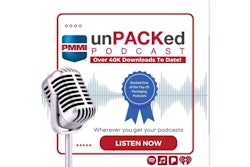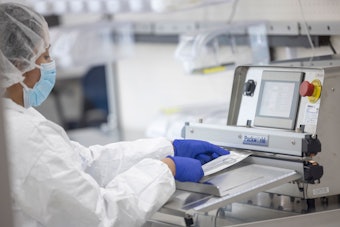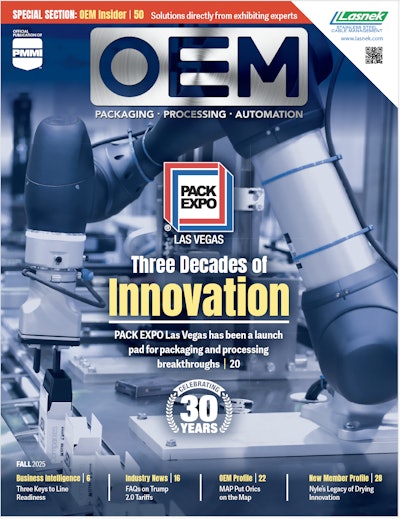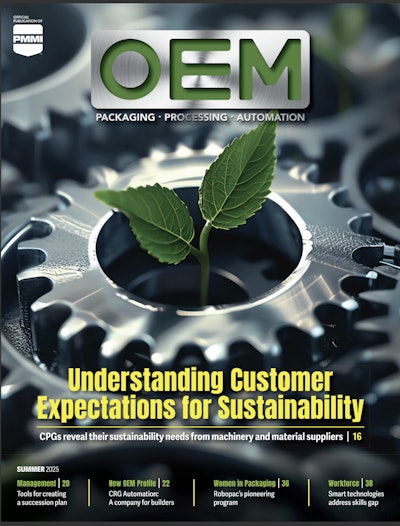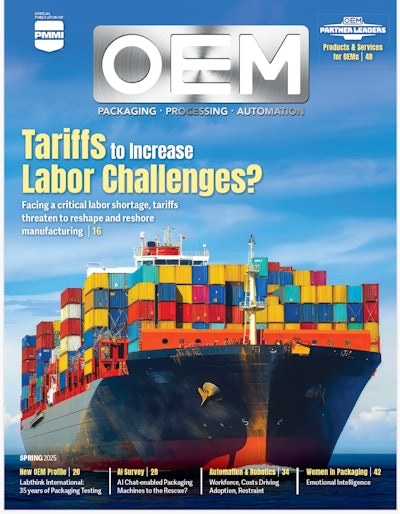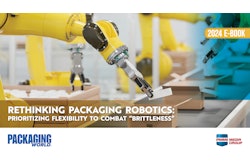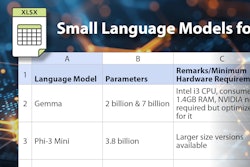Join us on a voyage of discovery as curators Jack Aguero and Brent Meyer take unPACKed with PMMI listeners into the nearly two year odyssey that eventually led to the PACK to the Future Interactive Exhibit debuting at PACK EXPO LAS Vegas and Healthcare Packaging EXPO in the North Hall of the Las Vegas Convention Center. With PACK EXPO LAS Vegas and Healthcare Packaging EXPO now rapidly approaching, unPACKed sat down with Aguero and Meyer to discuss how they tackled such an enormous endeavor that includes nearly 30 historic packaging machines dating from the late 1890s to the late 1970s and is surrounded by imagery supplied by CPGs, Museums, and others such as Coca-Cola, General Mills, Kellogg, Hormel, Anheuser-Busch and Merck.
Hear where they found help along the way and a slew of other interesting tales on their journey through the evolution of packaging and processing. It's a one-of-a-kind interview about a first of its kind PACK to the Future Interactive Exhibit.
To subscribe, rate, review and find more unPACKED podcast episodes, visit pmmi.org/podcast or find us on Apple podcasts, Spotify or iHeart Radio.
 | Read the full transcript below. |
Sean Riley:
We're pleased to welcome Jack and Brent to the podcast. Welcome, gentlemen.
Jack Aguero:
Thanks, Sean.
Brent Meyer:
Thank you, Sean.
Sean:
So I was fortunate enough to be on the board that helped put together the PACK to the Future, so I know a little bit about the background and the inner workings of how you guys have actually worked on this for over a year. For our listeners, could you give us a little bit about your background, and I guess how each of you got involved to begin with PACK to the Future?
Jack:
Here at the History of Packaging exhibit, which will be at Pack Expo Las Vegas in September of this year. For my background, I've been in the packaging industry for 25 years, beginning in a barcode company that was purchased by private equity, and continuing to work with private equity up to joining ProMach in 2005. I worked at ProMach until 2012. During that time, I was also on the board of PMMI of Team [inaudible 00:02:31], and served as an advisor to ProMach, a not-for-profit PMMI partner. And Brent and I helped PMMI create the Robotics Zone at Pack Expo Las Vegas, 2019.
Brent:
Thanks, Sean. Jack got me involved in this project after he and I had worked together, like he had mentioned, on the Robotics Zone at the last Las Vegas show. Actually, my packaging background started with Jack also when I started working at ProMach. After I left ProMach I started my own communications company, and I have multiple clients in the packaging industry. It's really been a real pleasure to be invited in on this project.
Sean:
I guess I should have known that you guys knew each other from your ProMach days. I guess let's jump right in, and tell us about PACK to the Future. How did you guys approach it, and how did it come together?
Jack:
As you mentioned, Sean, this project is over two years old. So while we were working on the Robotics Zone, brainstormed with PMMI at their headquarters, and out of that brainstorm came the desire to create a never-before-done large exhibit of the history of packaging, PACK to the Future. And we've been working on this ever since. We will have almost 30 historic machines, five of which we intend to have running, and the historic facts and images in a large graphic timeline. These facts and images are from our partner major CPGs, including Coca-Cola, Merck, Johnson & Johnson, Anheuser-Busch, and also the Smithsonian and USFDA.
Jack:
We will have a wall of honor listing over 60 partner companies, including 28 OEMs, and the remainders CPGs and other organizations. We're also organized, and as you mentioned, we're greatly helped by an 11 person advisory board, which includes yourself, Chuck Yuska, the former president of PMMI, Bill Chris, the former CEO of Click Clock [inaudible 00:04:12], Ron Yakubasen of Merck, Ken McGuire of Procter & Gamble, among others. We'll have a speaker stage and 15 sessions addressing the future of packaging. We'll also pay tribute to PMMI members response to the pandemic COVID-19 challenge.
Brent:
Sean, I think that bringing this project together, how it came together was really a lot of pulling on a lot of threads. A lot of pride in this industry in where it's come from and where it's going. So it really was just that process of gradually contacting lots of people, pulling some threads, combining it with the research. And once we started being able to connect to some of the different people in the CPGs, we started getting a lot of information that could really take us back into the history. And I think part of it too is figuring out what to focus on and we decided to really start looking at packaging when the industrial age started, because that's when modern packaging really sort of evolved. And packaging has been around since civilization began. So a lot of just pulling on threads within the industry.
Sean:
I know one of the biggest challenges from figuring out where to start was getting contacts. So I guess beyond that, what were some of the other big challenges and how did you guys overcome them in terms of getting people to respond or having people be willing to share some of these things? Because it's an industry that sometimes can be very proprietary.
Jack:
Yes, you're right. So we had COVID as a challenge, and of course the physical show in Chicago was canceled Pack Expo connects virtual show was really not appropriate for this exhibit and we had to alert all our partners that [inaudible 00:05:42] re-engaged with them again and the next year. And then another challenge was indeed the fragmented factors of our industry. We have relationships among CPGs, but these are on the machine side, on the plant side, not at their corporate archival side. And so it was a challenge we didn't expect, but we had a great deal of difficulty in the beginning identifying who were the archivist in these companies.
Jack:
Found an out of date listing of archivists, we use that as a tool to start pulling on the string. Finding an archivist, when we found an archivist, we'd asked them, "Who else should we reach out to?" And sometimes they would help facilitate context for us. The Smithsonian is a large organization. We really couldn't figure out who do we contact at the Smithsonian, and it was the archival team at Merck that has a big relationship with the Smithsonian that facilitated that contact with us. And once we got in contact with the Smithsonian, they were just fantastic and helping us. So it was really person by person and who else do they know that led us down this path.
Brent:
Like Jack mentioned, I think COVID was a huge challenge once the show was sort of back on and the exhibit was back on the archivist actually couldn't get back into their offices and some of them didn't have digital access to all the things that we had talked about that they were willing to share. So all of a sudden we're in this managing time period of trying to say, "Okay, how can we get the information that they have and continue to put this exhibit together?" So I think all that uncertainty really created some challenges. Other than that, we really collected a wealth of information. People shared hundreds and hundreds of photos and hundreds of stories and some nice resources also became available, like Jack mentioned, the Smithsonian, things like the library of Congress had a wealth of information also. And I think that just really kind of assembling all that and putting it together was it was a challenge, but it was kind of a pleasant challenge because there's a lot of really interesting information out there.
Sean:
So I guess, once we get to the show, what can people expect to see in PACK to the Future?
Brent:
I think the largest portion of the exhibit will be a 250 year timeline of packaging history. And it really traces the evolution of packaging since the industrial revolution. That's really when modern packaging started, and I think that we'll have close to 30 packaging machines from OEMs, the US Food and Drug Administration will also have a display on how the regulations has impact packaging labeling. And I think one of the things that was interesting that we learned is that the FDA started making regulations in the mid 1800, and so I think that people will see a really kind of an interesting exhibit where they'll go through and see some nice historical photos that really date back until 1800, facts that go back into the 1700 with the machines around. And as people exit there will be a video wall and there'll be speakers on the future of packaging. So I think it'll be a really good highlight of the industry where it's been, where it's going. When people go through it, we hope that they learn a lot and they get some information about where the industry is going.
Jack:
Well, I think people will see something that actually surprised me, which was how early in the history of packaging women played such an essential role. You'll see images in the timeline of women on packaging lines from the late 1800 to the early 1900. We also tell the story of a woman named Margaret Knight, who is considered the female Edison. She invented the machine that makes flat bottoms for paper bags and was finally credited for that patent in 1871 after she had to engage in a legal dispute with a man who tried to steal her idea. And that was one of 26 patents she's credited for. This lady started working in a cotton mill when she was 12 years old, but by 1870 she founded the Eastern Paper Bag company. And you'll see that story at the exhibit.
Jack:
The instrumental role of women in packaging continues today with PMMI's packaging and processing women's leadership network, which we'll have a breakfast meeting on the second day of the show on Tuesday. The keynote speaker's scheduled to be Tracey Noonan co-founder and CEO of Wicked Good Cupcakes, who's going to address how she's scaled up an e-commerce business, how she's managing a growing workforce and how the food and beverage industry is evolving.
Sean:
Very interesting and that was very savvy Jack to get the packaging and processing women's leadership networking. It's a great organization within PMMI that's really helped raise the awareness of women in packaging and processing. So you just touched on some things, Brent, that are interesting that have sort of stayed the same. Things that have been around for a long time. So I guess, are there other things that have stayed the same and I guess what are ways where it has changed in more leaps and bounds?
Jack:
Yeah. Brent and I have talked about that question of what's new and what stayed the same. And since the industry is.... Sean, is constantly evolving and it's hard to identify other than a few things that have stayed the same, and there are many things that are new, but one thing that has been a constant is the desire of humankind to make packaging machines that are faster, easier, more efficient, and now more sustainable. That's been a constant in the industry since the industrial age.
Brent:
Yeah. I think to expand on that a little bit there's a lot of examples of that where people wanted to improve other people's lives. And Jack mentioned that Margaret Knight worked in the textile industry as a small child. Michael Owen, who built the first bottle making machine, automated bottle making machine worked as a glassblower beginning at age 12. And the bottle making industry used a lot of child labor and it could be a very dangerous job, and he really had a goal of getting children out of business. And so he invented a bottle making machine and automated it. So people just want to find better ways to really help mankind. I think that was a big thing and I think also we see people who are new built packaging machines and change the industry who weren't in the industry like Michael Owen, who I mentioned before was not an industry.
Brent:
Clarence Birdseye was a trapper when he got the idea for quick-freezing when he saw it a fish caught when they laid out on the ground and they immediately froze and they stayed fresh. Margaret Knight worked in a textile plant, John Van Wormer who did the milk carton and he was a toy maker, Otto Rohwedder who invented sliced bread and the machine to wrap it, was a jeweler, and even Freddy Lenz who is the founder of Felons, which has a machine in the exhibit, he had a string time machine from the 1920s. Freddy Lenz was a sausage maker and he invented a machine to tie the ends of sausage. Well, it became so popular as a bundling tool and produce in another industries, he started a packaging company and left a sausage business and that was a fairly common trend before packaging machinery became its own industry.
Sean:
That's interesting. And it is a humongous thing that has grown, like you said, from other industries were bundling sausages became bundling packages and stuff like that. And it's just been a very unique evolution to say the least. So I guess you've mentioned the 1920s and some other machines from earlier. What's the oldest thing that we're going to see at the exhibit?
Brent:
The oldest machine is from the 1890s and that's a diagraph stencil machine, which was actually used to stencil crates that went down the Mississippi River on riverboats. And that's the oldest machine that we have, but again, we have facts dating back from the 1750s and images as soon as they were being able to be created from the 1800, so that will give them a [inaudible 00:13:22] of how the industry has evolved, but we have several machines from the early 1900 and then they kind of go on up through the 1980s. It includes the very first PLC for motor in 1968. We have early cart nurse. We have a wide range of different types of machines. So it's should be a pretty exciting.
Sean:
Very cool. And, and, and a lot of these, I know some of them are still in operation, still in theory could be... They won't be necessarily at the show, but they're pretty robust machines that would still be able to be used.
Jack:
That's right. In fact, Speedy's bringing in a machine that had to almost pry out of the hands of their customer. It had been with their customer running for 20 years. So now these machines can be very robust, Sean.
Sean:
Very interesting. All right. Well, I've had you guys already for over 20 minutes, so I guess if you could each just give me one other particular highlight or innovation that really stood out for its longterm impact on packaging.
Jack:
I guess I'll start with just an overview and that Chuck Yuska early in the project said, "A sub theme should be how packaging has benefited humankind, but you think without packaging we couldn't have these mega cities. People would be back to subsistence farming." So that's the overall sub theme of the exhibit. And I'd like to invite everybody to please come. I'm posting a historic fact once every business day on my personal LinkedIn account and I'd love for people to like them and increase my visibility. We're PACK to the Future and please come to the north hall during the show and see that exhibit.
Brent:
And I think just one last thing, it's hard to pick something that has its lasting impact. I think what you'll see is each sort of time period has certain developments that happen. Canning when it first came possible in the early 1800, it had a dramatic impact on the industry. Paperboard packaging, sterilization, when they moved from steam manufacturing to electricity. Of course, lithographic printing chains, labeling, first PLC, and then down Servo's, which are really much more recent innovation are still dramatically changing packaging machinery today.
Sean:
That's interesting, but I remember when Servo's were new in packaging and now they're a thing that's just expected to, or is seen on a whole bunch of packaging and processing lines. Well, this has been great and I can't thank you guys enough for taking the time, first of all, to put this whole thing together over again over the course of two years in a stoppage wit with COVID and everything, but we're finally going to be able to see this at Pack Expo Las Vegas. And I really hope everyone makes sure they take some time to really stop by and take everything in. So with that, thank you, Jack, and thank you, Brent, again for coming on.
Brent:
Thanks Sean.
Jack:
Thanks Sean
Sean:
Registration for the show, which includes access to both Pack Expo Las Vegas and Healthcare Packaging Expo is $30 through September 3rd, after which the price increases to $130. For more information, and to register online visit Packexpolasvegas.com. Please rate, review, and subscribe. To do that, go to the iTunes podcast or Spotify app on your phone and search for UnPACKed with PMMI.


